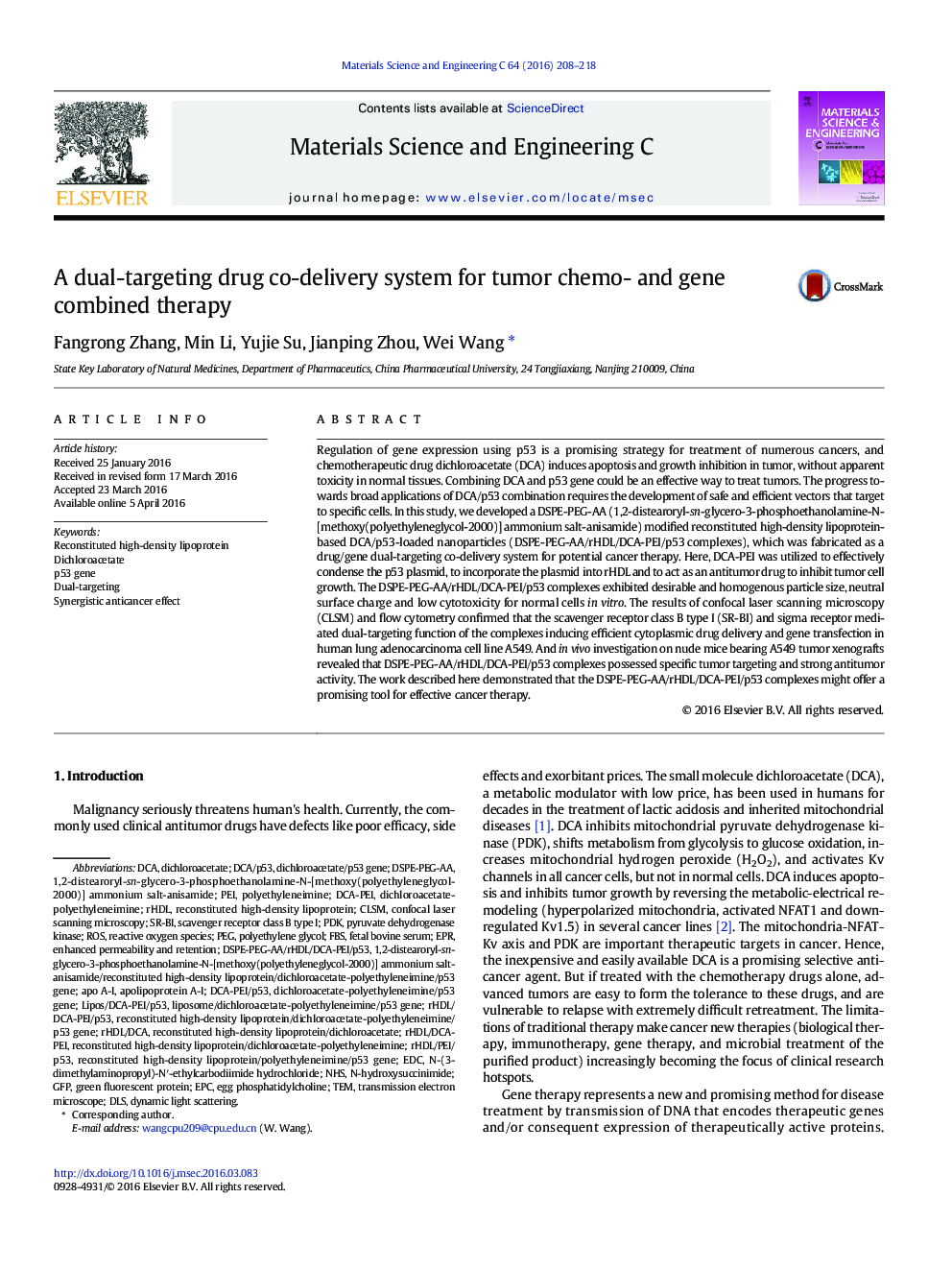| Article ID | Journal | Published Year | Pages | File Type |
|---|---|---|---|---|
| 1427952 | Materials Science and Engineering: C | 2016 | 11 Pages |
•DSPE-PEG-AA/rHDL/DCA-PEI/p53 was successful prepared with desirable and homogenous particle size, neutral surface charge, low cytotoxicity in normal cells and dual-targeting ability via the recognition of SR-BI and sigma receptor.•The anticancer activity was due to the synergistic effects of DCA and p53.
Regulation of gene expression using p53 is a promising strategy for treatment of numerous cancers, and chemotherapeutic drug dichloroacetate (DCA) induces apoptosis and growth inhibition in tumor, without apparent toxicity in normal tissues. Combining DCA and p53 gene could be an effective way to treat tumors. The progress towards broad applications of DCA/p53 combination requires the development of safe and efficient vectors that target to specific cells. In this study, we developed a DSPE-PEG-AA (1,2-distearoryl-sn-glycero-3-phosphoethanolamine-N-[methoxy(polyethyleneglycol-2000)] ammonium salt-anisamide) modified reconstituted high-density lipoprotein-based DCA/p53-loaded nanoparticles (DSPE-PEG-AA/rHDL/DCA-PEI/p53 complexes), which was fabricated as a drug/gene dual-targeting co-delivery system for potential cancer therapy. Here, DCA-PEI was utilized to effectively condense the p53 plasmid, to incorporate the plasmid into rHDL and to act as an antitumor drug to inhibit tumor cell growth. The DSPE-PEG-AA/rHDL/DCA-PEI/p53 complexes exhibited desirable and homogenous particle size, neutral surface charge and low cytotoxicity for normal cells in vitro. The results of confocal laser scanning microscopy (CLSM) and flow cytometry confirmed that the scavenger receptor class B type I (SR-BI) and sigma receptor mediated dual-targeting function of the complexes inducing efficient cytoplasmic drug delivery and gene transfection in human lung adenocarcinoma cell line A549. And in vivo investigation on nude mice bearing A549 tumor xenografts revealed that DSPE-PEG-AA/rHDL/DCA-PEI/p53 complexes possessed specific tumor targeting and strong antitumor activity. The work described here demonstrated that the DSPE-PEG-AA/rHDL/DCA-PEI/p53 complexes might offer a promising tool for effective cancer therapy.
